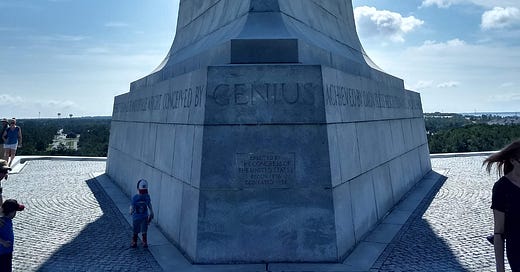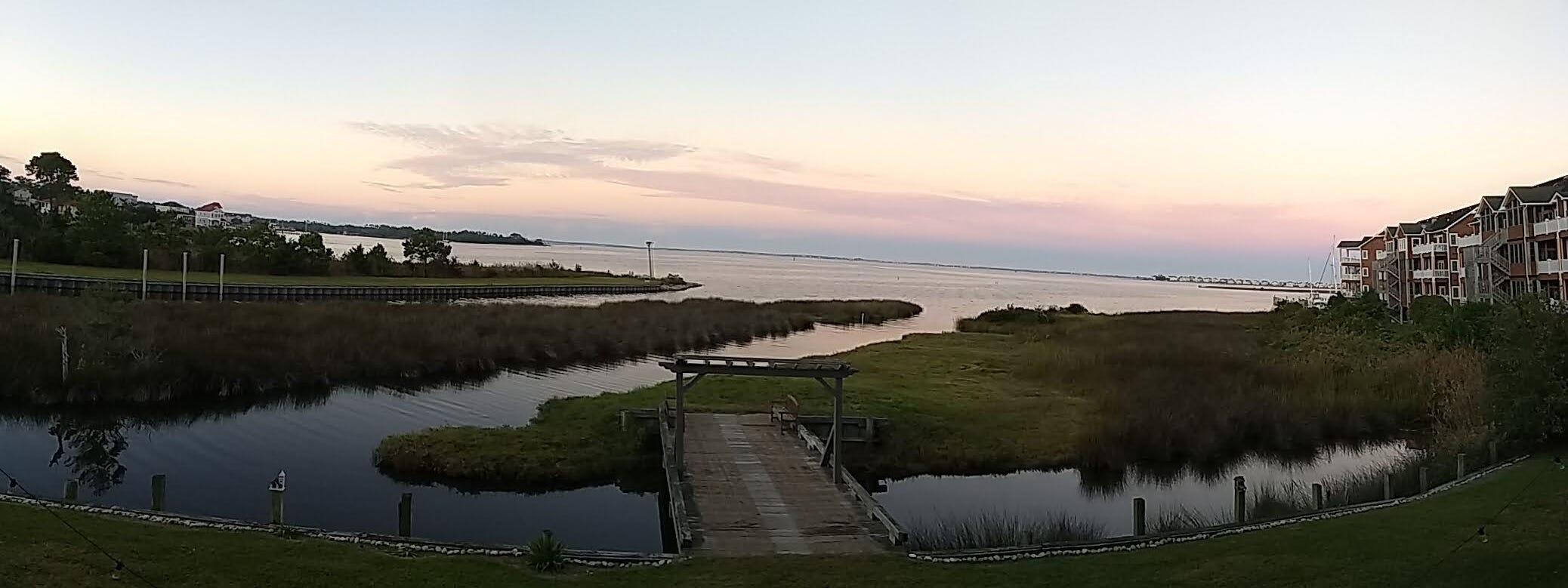This last October, my wife Alli and I drove south from our home in Washington, DC, for a last chance at the beach in the Outer Banks. If you don’t know it, the Outer Banks, or OBX as the oval bumper stickers say, is a thin strip of barrier islands running 200 miles along the coast of North Carolina.
For the first part of our trip, the weather was cold and excessively windy, and we stayed inside and read. I revisited a nonfiction favorite, David McCullough’s The Wright Brothers, from 2015.
Trying to imagine Kitty Hawk in 1901, I realized that what the Wrights sought here is still true: strong winds and soft sands. Most of the island was barren then, with some scrub bushes and a few trees. It was a rural and very poor area, and the Wrights — two blue-collar bicycle mechanics from Dayton, Ohio — had to bring or build most of what they needed.
It’s kind of thrilling to read about them, even when you know what the end result will be. They were constantly solving problems and loving this place, even when the mosquitos were thick enough to “blot out the sun.” The locals thought that they were the best entertainment available. One man reported, “they would watch the gannets1 and imitate the movements of their wings with their arms and hands. They could imitate every movement of the wings of those gannets; we thought they were crazy…”
My wife and I went to the Wright Brothers Memorial. The details were fresh in my mind from the book and I loved it. The museum was great and has obviously been recently redone. There’s not a ton to see: reconstructions of the shed and the Flyer, marker stones of the first flights, and a large memorial on a hill. Still, I absorbed several historical facts that when taken together, blew me away.
First, there’s what the Wrights were able to achieve, so quickly and unexpectedly. Speaking to the Aéro-Club de France in Paris in 1908, Wilbur Wright said,
Scarcely ten years ago, all hope of flying had almost been abandoned; even the most convinced had become doubtful, and I confess that, in 1901, I said to my brother Orville that men would not fly for fifty years. Two years later, we ourselves were making flights.
Wilbur would only live another few years, until 1912. But Orville, the first man to fly a powered, heavier-than-air2 craft, lived to 1947, long enough to see his own country drop both fire and atomic bombs on Japan in World War II. Here he is, attempting to making sense of this towards the end of his life:
We dared to hope we had invented something that would bring lasting peace to the earth. But we were wrong… No, I don’t have any regrets about my part in the invention of the airplane, though no one could deplore more than I do the destruction it has caused. I feel about the airplane much the same as I do in regard to fire. That is I regret all the terrible damage caused by fire, but I think it is good for the human race that someone discovered how to start fires and that we have learned how to put fire to thousands of important uses.
As McCullough notes, “He lived to see aviation transformed by jet propulsion, the introduction of the rocket, the breaking of the sound barrier in 1947.” A generation later, two men walked on the moon. Only 66 years passed between the first flight and the flight that landed on the moon, carrying a little scrap of the Wright Flyer. Even today, flight is still new, and it’s definitely not Lindy.
This makes me think about the sweep of history. The Wrights were modest, creative, hardworking, and they created something that defied all expectations at the time. But the story didn’t stop there. They could hardly have anticipated the bombing campaigns of WWII, space flight, or even how connected the entire world would become through jet-propelled air travel.
The point that I think is most important for New_ Public is that the path of technology’s development is not inevitable. If you asked the average person to finish a sentence beginning with, “flight is…” you likely would have received a strikingly different answer in every decade for the first half of the twentieth century.
Nearly three decades into the internet age, and approaching two decades of social media, I think that this is important context: there is no fixed track that the future follows. When you read essays, articles, or tweets with statements that begin, “social media is…”, or “the internet is…” I recommend amending those statements in your mind with, “for now.”
And if you have followed our project, I suspect you already know this, but it’s worth saying: We should not leave the future of the internet up to trends, financiers, or “the great men.” We all have agency in shaping what comes next. That’s why we do the research, and are why we’re doing our best to spread the word about better digital public spaces. You may even start to see us doing some test flights of our own this year.
Still looking for two good test pilots,
Josh
Photos by Josh Kramer
New_ Public is a partnership between the Center for Media Engagement at the University of Texas, Austin, and the National Conference on Citizenship, and was incubated by New America.
A type of large sea-bird
There were, of course, things like dirigibles and gliders before the Wrights.








Social Media is a tool for retaking our Personal Agency in social decision making through Fiduciary Money. And once we can all have our say in where the money can, should and will be made to go through Fiduciary Finance, that changes everything. bankofnature.eco